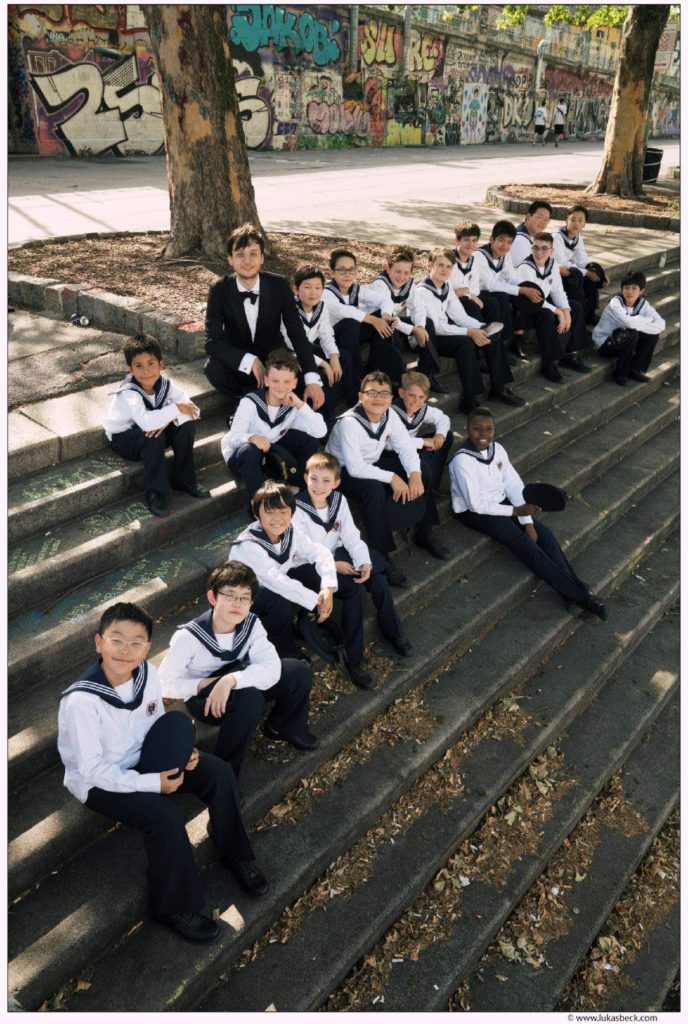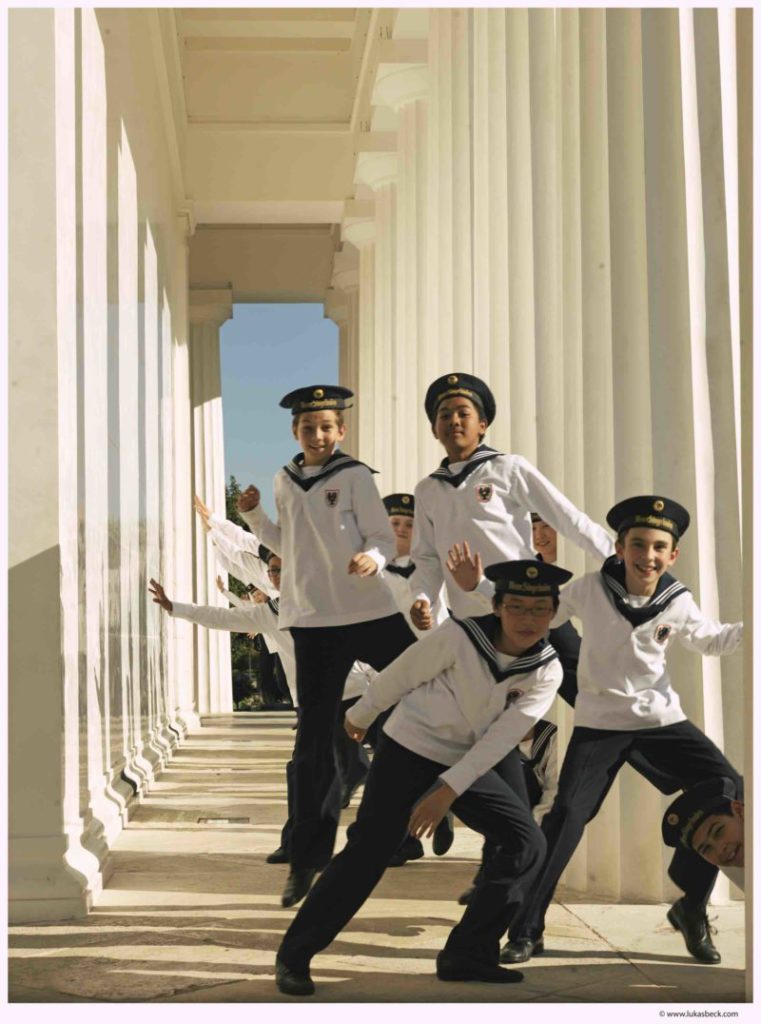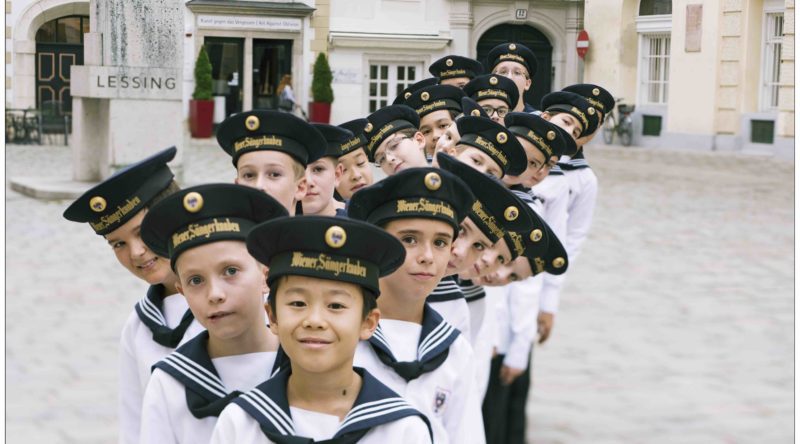INTERVIEW: Vienna Boys Choir explore musical traditions of the Americas in holiday program
Photo: The Vienna Boys Choir annually bring their Christmas concert to North America. Photo courtesy of Lukas Beck.
When the historic and world-renowned Vienna Boys Choir take the stage at the legendary Carnegie Hall in New York City Sunday, Dec. 8, they will bring with them not only masterful and unparalleled interpretations of Christmas classics, but also a thoughtful exploration of traditional songs from the Americas. This is, after all, their annual tour of the United States, and this time around, they are offering up energetic history lessons that speak to the many lands, cultures and peoples of North and Central America.
On the program for Sunday’s concert will be a Plainsong Chant known as “Domine, exaudi orationem meam” (“Lord, here my prayer”), which comes from Psalm 101:2 (102:2), a personal and intimate lament sung in deep distress, according to press notes.
“I think this one has more of an American slant to it,” said Dr. Tina Breckwoldt, dramaturg and press officer for the Vienna Boys Choir. “There are quite a few pieces of what we would call a journey through the Americas.”
She is particularly excited for American audiences to hear Antonio de Salazar’s “Tarará qui yo soy Antón,” which translates as “Tarara, I am Anton.” This Mexican villancico, or village song, originated in Spain and derived from Medieval dances.
Some of the lyrics speak to this community-based lifestyle in a small village: “I am Anton the miller / and this newborn child / is the son of working folk / he has all my esteem. / And so with my rattle, / my bells and my tambourine, / I’ll go to Bethlehem / to dance the Puerto Rico and the Cameroun.”
Canada is also represented on the program by Raymond Murray Schafer’s 1979 piece, “Gamelan.” Although the selection comes from a Canadian composer, the Vienna Boys Choir will actually be imitating the sounds of an indigenous Indonesian orchestra, which is what “gamelan” or “gambelan” means.

Beyond this, the Americas also come into fine focus thanks to some famous 20th-century composers. George Gershwin will be featured as well as Leonard Bernstein.
“Then you have ‘Joy to the World,’ ‘Hark! The Herald Angels Sing,’ ‘O Holy Night,’ and this is leading on to more modern stuff,” she said. “We have ‘White Christmas,’ ‘Let It Snow’ and, of course, ‘Rudolph the Red-Nosed Reindeer.'”
Breckwoldt said that each time the Vienna Boys Choir decide to travel the world, they like to bring musical gifts for the local cultures. This immediately connects the storied history of the choir with the communities they have been singing to for years and years.
“The way we see it, I think if you go somewhere, what you bring as a gift is your music,” she said. “I found it fascinating to discover that the Vienna Boys Choir has recorded American music as early as 1930. I have a recording from 1931 of a Native American song — 1931, that’s way before anyone was doing world music, but they did it.”
The boys in the choir take part in rigorous rehearsals to fine-tune and develop their voices. They are young boys, learning so much about their craft and their discipline’s history, and they are expected to not only know the notes and lyrics of each composition, but also the life of the composer and the history of the individual pieces. This holistic education, Breckwoldt said, helps them internalize the pieces, and it leads to better performances.
“I think quite a few composers are inspired by the text, and they want to express something,” Breckwoldt said. “And it helps the performer if they know that. I think it’s essential that they understand what they are singing. There’s no point otherwise. … Maybe some of it is conveyed just by the music, but it’s much easier if you have the information.”
As an example, Breckwoldt said if the choir selected a Native American traditional song and didn’t learn the history of the composition, there could be many mistakes in the presentation of the lyrics. After all, in a two-hour program, the choir members sing many languages, and it’s imperative that the boys pronounce the words correctly and appreciate the value of honest translation.
“If you were doing something that is Native American, and you’re doing it in a Native American language, we would be really floundering if you didn’t know what the words meant,” she said. “I think it’s essential that they’re told something about the songs.”
One background lesson that has truly opened the eyes of the choir members deals with warfare and how some of these Christmas songs aided troops during hellish times. For example, “O Holy Night,” which was penned by Adolphe Adam in 1847 (original title: “Cantique de Noël”), was a common song to hear in the trenches of World War I.
Here’s how Breckwoldt set up the poignant scene: “It was World War I when French and German troops were opposing each other, and they started singing across the trenches. This happened with ‘Silent Night’ as well. It was sung across the trenches, and the other parties took it up. Both sides were singing in the middle of war, and that’s a profound message.”
Breckwoldt said she believes these Christmas tunes, sung by these young men in the trenches, brought solace to two sides that were almost at a breaking point. One can almost close their eyes and picture Christmas Eve in 1914, and the utterly miserable soldiers in the trench yearning for the warmth and safety of home. One side starts singing a holiday song, and the soldiers across no man’s land hear the tune hanging in the air. Rather than meeting the song with violence, they respond with the second verse. It’s a tough story to prove, and perhaps it’s apocryphal, but the tale matches the content of the songs and helps modern-day interpreters, such as the Vienna Boys Choir, with their performances.
“Legend has it that apparently the soldiers took it upon themselves to stop any kind of warfare for the next 48 hours,” she said. “There’s a period where the soldiers had a good time, and that’s the power of music.”

Irving Berlin famously wrote “White Christmas” in 1941, when the world was at war, and peace seemed like a faraway concept. The lyrics — dreaming, nostalgia, treetops glistening, children listening, sleigh bells in the snow, being merry, being bright — proved to be escapist in nature, and the same warm feeling that listeners in 2019 receive when hearing the tune provided comfort for those who most needed it during a time when darkness fell upon the world.
The boys receive all of these lessons and more. They come to the choir because of their musical potential, but they leave as students of many different cultural traditions and historical anecdotes.
“We mainly look for a deep interest in music and singing in particular,” Breckwoldt said. “We look for somebody who is enthusiastic about singing a lot and developing his own voice because that’s what we try to do. We teach them to literally find their own voice because if you properly sing, it really is quite physical, using muscles that most of us hardly ever use and hardly are ever aware of — to really use your body as an instrument. We need boys who are deeply interested in that. We want them to be, they need to be grounded and on a very even keel. They need to really want to be part of a community. That’s important.”
She added: “Music does help with the concentration and the focus. It is gymnastics for the brain, so they can learn and take their time with that. We’ve had boys who weren’t all that good in traditional academics, if you will, but were helped by the music, and that’s fine as well. It really is the most important thing, wanting to sing, wanting to be a part of this group, and basically really burning with a desire to do this. That’s more important than anything else.”
Breckwoldt recognizes that there is nothing more special in life than teaching a child because the audience is almost always a captive one, and the young boys love the challenge of tackling a new obstacle.
“They’re like little sponges, and then the sponge maybe five years on comes back and says, ‘Oh, I really enjoyed that,'” she said. “That’s quite cool. It’s quite privileged to be working with children who are receptive and just enjoying what they’re being given.”
Part of the history that the choir members receive involves the very history of the choir itself. The VBC, also known as Die Wiener Sängerknaben, has approximately 100 choristers between the ages of 9 and 14. They are divided into four traveling choirs, and they each spend nine to 11 weeks on the road.
There have been boys singing in Vienna’s Imperial Chapel since 1296. In 1498, Maximilian I moved his court to Vienna, and the Vienna Boys Choir was officially founded (at the same time the boys play Carnegie Hall, there is an art exhibition focused on Maximilian I at the Metropolitan Museum of Art). Over the years, the musicians who have worked with the choir are a who’s who of classical composers. According to the VBC official website, the list includes Salieri, Mozart, Bruckner, Haydn and Schubert, among others.
“What we do is when they first come, when they do sing their first Mass in chapel … we take them up there to the organ loft and say, ‘Well, this is where Franz Schubert stood 200 years ago,’” Breckwoldt said. “Or we just had last week a sound recording in the chapel, and they were doing a Medieval piece by Arnold von Bruck, who was a Belgian composer in the 1500s. They were doing it in the very spot where it was first performed and for which it was written, so to tell them that, I think that gives them a much more powerful sense of what they’re doing and why they’re doing it.”
By John Soltes / Publisher / John@HollywoodSoapbox.com
The Vienna Boys Choir are currently touring the United States. They will play New York City’s Carnegie Hall Sunday, Dec. 8. Click here for more information and tickets.

